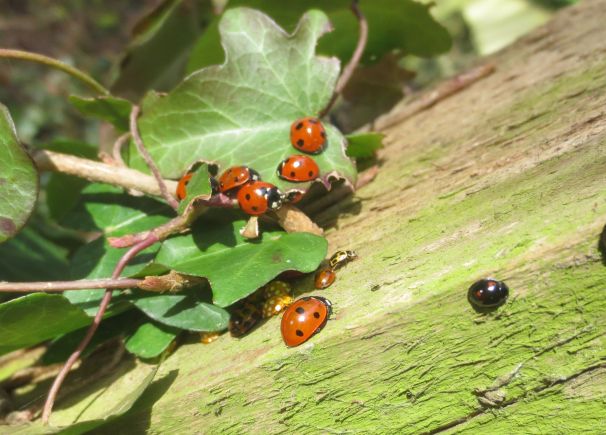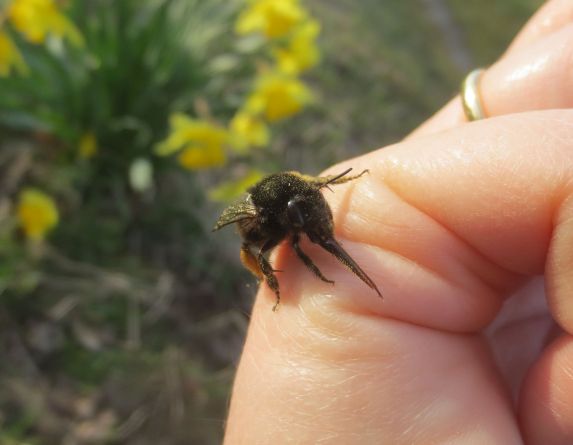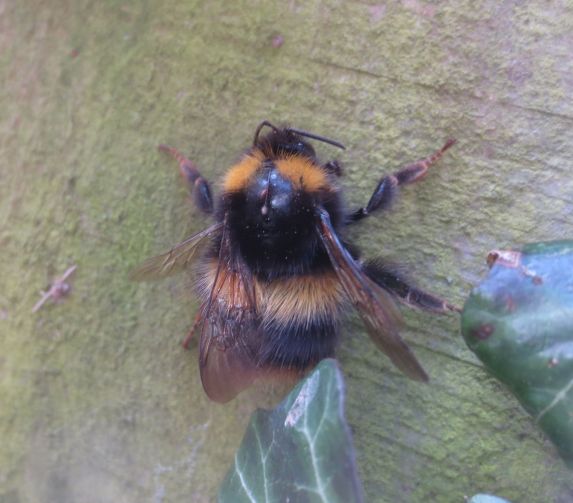This has been the first convincingly springlike day in the UK on which I’ve had chance to get outside and see what’s happening in the local woodlands and grasslands.
And what a fun little walk it was.
The highlight for me was discovering a rather fantastic multi-species aggregation of ladybirds in a local woodland nature reserve.

There appear to be individuals of 6 species in the little cluster: 7-spot ladybird (Coccinella 7-punctata), Harlequin (Harmonia axyridis), Pine (Exochomus 4-pustulatus), 2-spot (Adalia bipunctata), Orange (Halyzia sedecimguttata) and 14-spot (Propylea quatuordecimpunctata). The pine ladybirds and 7-spots were already waking up – indeed, the pine ladybirds already seemed to be making progress creating the next generation. The others, I assume, will follow soon after. I suppose the photo is also an example of the size variation even in the common UK ladybird species, from the big harlequins and 7-spots to the smaller species like the 2-spot. Sadly none of the smaller, more easily overlooked microladybirds today!
I’ve personally never seen a multi-species aggregation like this before, although the books we have show many fantastic pictures of single species hibernating en masse, and I’ve heard that ladybirds do do this fairly frequently. I suppose it makes sense – if the conditions are favourable in a crack or hole so one ladybird chooses to hibernate there, it would follow logically that other individuals might make judge the conditions to be favourable for them too. Of course, this is a perennial problem that turns up in laboratory experiments when multiple individuals are being tested – trying to decide whether finding 20 beetles in that part of the arena or that arm of the apparatus means all of them find that odour/colour attractive, or whether a single individual liked the odour and the rest just prefer to cluster with other individuals. It’s why I personally prefer to work with single individuals as far as possible, but in some applied contexts it’s important to bear in mind that conspecific and, indeed, interspecific interactions are very important in determining insect behaviour.
The other major sightings of the day were the early spring bees – the charming solitary bee Anthophora plumipes, the Hairy-footed Flower Bee – we found one female in a daffodil that had sadly taken some damage to her proboscis, but it shows just how long it is on this species, hence why they use long-corolla flowers like comfrey and pulmonaria (and also Cerinthe when it’s available). And 4 species of bumblebee, the ones one might expect in late March: Bombus terrestris, B. lucorum, B. pratorum (including a rather tatty one on a fencepost) and B. hypnorum.


Edit: I’ve since read that multi-species aggregations in ladybirds are not necessarily a hibernation thing at this time of year – i.e. it’s unlikely those ladybirds hibernated like that – but that they do tend to cluster up as the weather begins to improve, prior to dispersing properly up into more preferable feeding habitats.
How did you get the Anthophora to sit on your hand? I saw several out yesterday but couldnt even photograph them as they were so quick.
LikeLike
I think she was a bit chilled and quite unwell. Probably the proboscis damage was making it difficult for her to feed, and I’m not sure if the nectar of daffodils (where were found her) is particularly good for them either. She did perk up after sitting on my hand for a while and then flew off competently enough, but I’m not optimistic for her as I’m not sure how we’ll she’ll be able to feed or excavate holes for her eggs. 😦
LikeLike